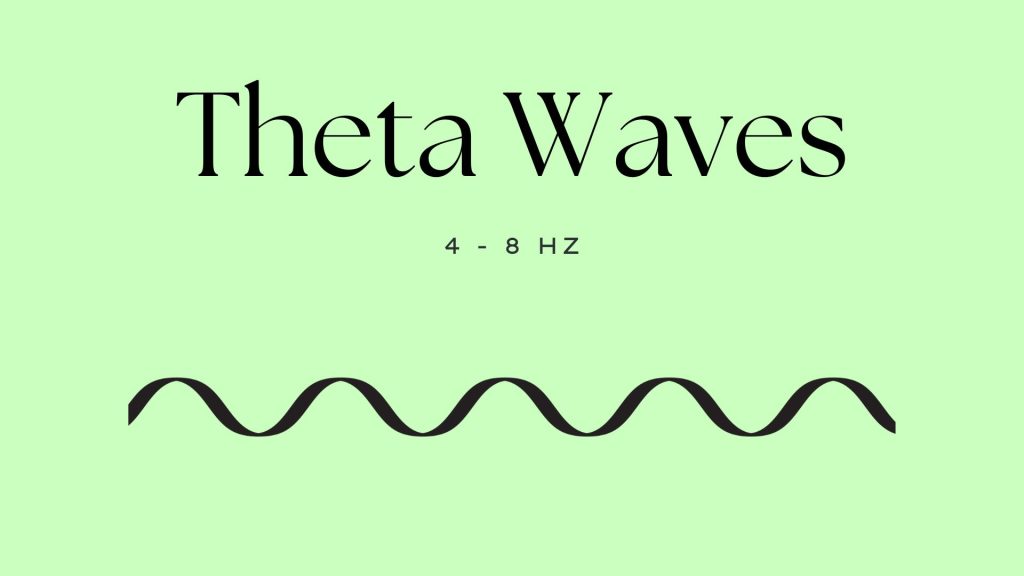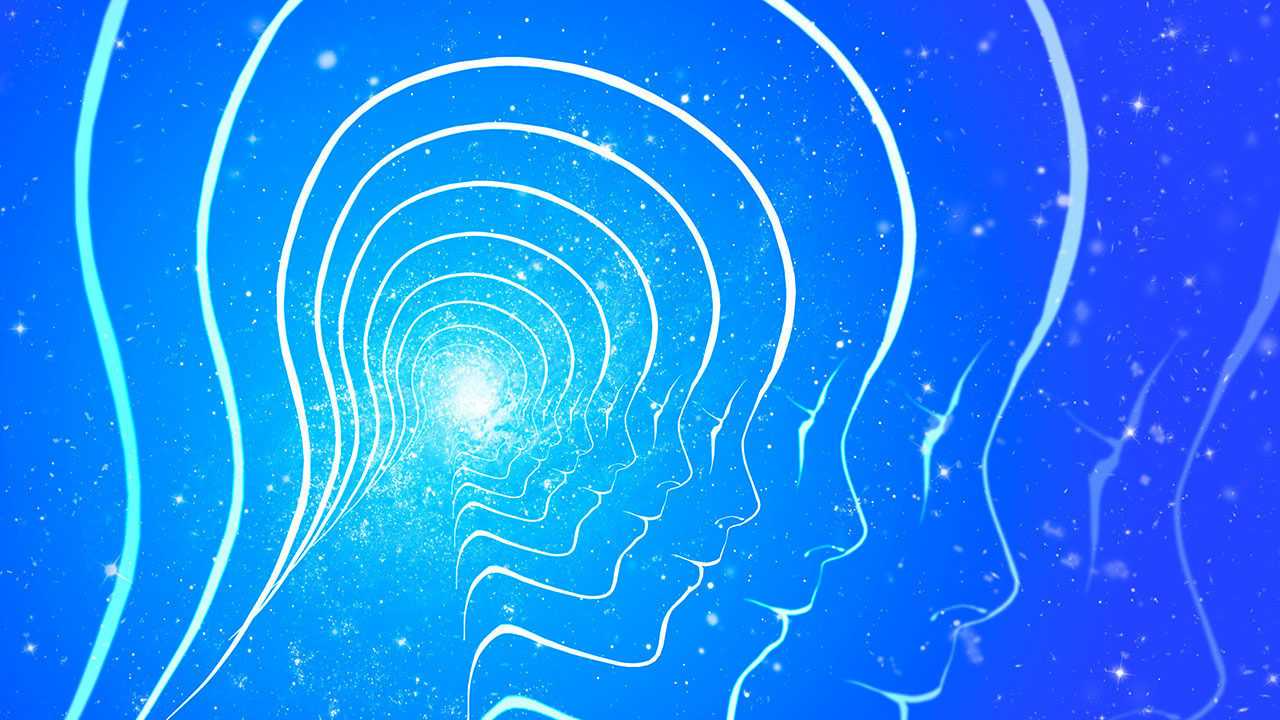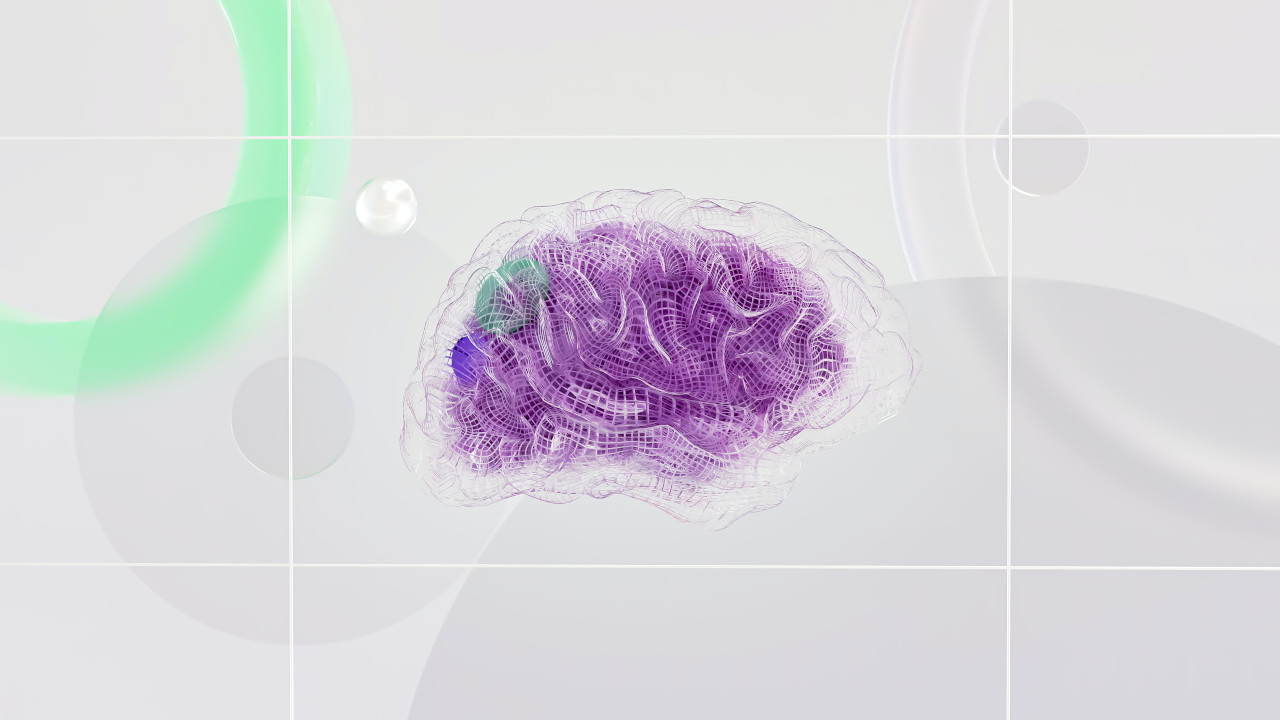No matter what you’re doing or thinking, there are brain waves periodically traveling across your cortex. This is how the regions of the brain communicate and cooperate to get things done.
These waves are measured in Hz, representing cycles per second. So a 4 Hz signal oscillates 4 times every second.
If you are asleep or in a drowsy, relaxed state, these waves will be slower, somewhere in the Delta (0.5 – 4 Hz) or Theta (4 – 8 Hz) bands.
If you have more energy or you’re exerting a great deal of mental effort, you will find higher frequency waves, such as Beta (12 – 30 Hz) or Gamma (30 – 100 Hz).
What’s So Great About Theta Waves?

Theta bands are on the lower end of the brain wave spectrum, at 4 – 8 Hz. The only band lower than this is Delta, which is primarily found during deep sleep.
No surprises then that a theta state of mind is found when you’re very calm and relaxed, you might be daydreaming, about to drift off to sleep, or having just woken up.
You’ll also find theta waves when you’re operating on autopilot. You might be performing a task but you’re able to do it without much concentration, so your mind goes elsewhere.
Theta states often have this sense of effortlessness coupled with a lack of conscious control and limited awareness. As such, you’ll often find them in meditative, hypnotic, trance-like states (more on these below).
We all know it can be hard to slow down sometimes, to destress and unwind, which is to say we struggle to find our way into a theta state of mind when we need to.
How To Activate Theta Waves:
That need not be the case, and the following 10 methods should help you enter a theta state of mind if and when you desire:
1. Meditation
Meditation has been steadily growing in popularity in recent years, as more people recognize the many benefits it has, such as how it calms the mind and offers a release from those things bothering and stressing us out.
Most meditation will get you at least as far as alpha brain waves, but with time and experience in the right form of meditation, you can sink even further into a theta state of mind.
Studies have found nondirective meditation can produce both alpha and theta waves. Nondirective meditation requires letting your attention wander, without trying to control it or judge the thoughts that occur.
Another study suggests that theta activity in the frontal regions of the brain during mindfulness meditation enhances brain plasticity. Mindfulness is about staying in the present, when thoughts pop up you acknowledge them and watch as they pass by.
You can learn how to access theta waves through meditation with the Silva Ultramind Method.
2. Flow
Have you ever engaged in an activity to the extent that you lost your sense of time and self? Then you’ve experienced what some call flow, and others call being in the zone. Flow occurs at the border between theta and alpha brain waves, at about 8 Hz.
In flow, your actions and decisions happen almost automatically, you rely on intuition and skills you’ve built through experience, your attention is fully absorbed and almost nothing could break that concentration.
You’ll often find flow in gamers, those who engage in sports like surfing or downhill biking, and musicians in the middle of an improvisation. Each must respond quickly and accurately.
But flow can occur in anyone provided the task straddles the boundaries of your abilities and offers quick feedback on your performance.
If you would like to learn more about your brainwaves and how to tap into the flow state to improve your performance, you can download my Flow Meditation Guide.
3. Binaural Beats
Playing two slightly different audio signals into each ear has the odd property that you will perceive a beat at a frequency that’s the difference between the two.
For example, a tone of 250 Hz played in your left ear, and a tone of 258 Hz played in your right, will produce a ‘binaural beat’ of 8 Hz.
This isn’t a feature of the signals but of how your brain processes them—it’s all in your head. You can thank something called brainwave entrainment, where brainwaves sync to another oscillating signal.
Looking towards theta brain wave activity, a binaural beat of between 4 – 8 Hz should help you achieve it. Put your headphones on and start by trying out these free binaural beat meditations from iAwake.
You can learn more about brainwave entrainment with my guide to binaural beats.
4. Isochronic Tones
Isochronic tones are similar to binaural beats in that they influence your brain waves through the brainwave entrainment mechanism. But they differ in how.
Both involve a beat, but where binaural beats create it by combining two different frequencies, isochronic tones simply take one frequency and play it repeatedly over short intervals.
The effect is a rhythmic pulse that encourages your brain waves to sync up. While binaural beats are growing in popularity and have more research behind them, isochronic tones aren’t far behind and should offer similar benefits.
It’s worth noting that while binaural beats require the use of headphones, because isochronic tones are a single frequency they can be listened to with speakers.
5. Self-Hypnosis
Hypnosis might conjure images of people doing weird acts without awareness, some might call it a stage show or a magic trick, but the more common forms of hypnosis are much less dramatic.
It is a deep, focused attention with reduced peripheral awareness and an openness to suggestion. Self-hypnosis is simply hypnosis applied by and to yourself. It’s similar to meditation but differs in that it involves a goal or desire that you will focus on.
Start as you would a meditation—find a place free from distractions and get comfortable. Use a technique such as counting backward or focusing on your breath to relax the mind.
Now you’ll introduce a suggestion—a positive statement geared towards self-improvement, such as how you might achieve a goal, or a change in how you think about yourself, others, or a situation.
Research has found self-hypnosis can help people improve sleep quality, lose weight, manage pain, quit smoking, increase self-confidence, and reduce stress and anxiety.
6. Shamanic Drumming
Music has a strong influence on our mind and brain waves—not just the earlier mentioned binaural beats and isochronic tones, but the music you listen to on a daily basis has an emotional character that alters your state of mind.
Shamanic drumming is geared towards manipulating our psychological states, and as such it’s another great musical experience that can unlock a theta state of mind.
Often practiced in groups, a repetitive beat at 4 beats per second is played that starts slowly but gradually builds up in intensity, drawing you into a trance that will drive theta brain waves.
You don’t need to be part of a group to experience the effects, you can find a drum and practice it yourself. We all have an innate sense of rhythm that should allow you to beat repetitively enough to find a flow.
However, even if you don’t have a drum, you will find shamanic drumming tracks on YouTube. If you couple it with a form of meditation you might find it easier to enter a trance state.
7. Thomas Edison’s Napping Technique
Theta brain waves are right on the edge of the delta waves that characterize sleep. If you’ve ever had weird dreams and imaginations when you’re drifting in and out of sleep, theta has played a role.
Thomas Edison, who was not fond of sleep and felt it a waste of time, found ways of taking advantage of this semi-lucid state to boost his creativity.
He would hold a ball in each hand as he rest so that if he drifted off too far, the noise of the balls hitting the floor would wake him, leaving him with the residue of those strange ideas he would otherwise have lost.
The famously weird Salvador Dali used the same technique, holding keys above a metal plate and using the images he was left with to inspire his art.
Science supports this interesting behavior, calling the early stages of sleep a “creative sweet spot.” If you need some creative insights you might try putting Edison’s napping technique—and your theta waves—to the task.
8. Lucid Dreaming
Where Edison’s napping technique requires being woken up, lucid dreaming relies on falling asleep.
Lucid dreaming is different from a typical dream as you become aware that you’re dreaming, but rather than wake up you remain there. Up to 55% of people have experienced at least one lucid dream at some point.
With regular practice, you can make it more likely you’ll find your way into a lucid dream. Doing so can help you overcome recurring nightmares and relieve anxiety, and even improve your motor skills if you practice them in your dream.
Lucid dreaming is a form of metacognition—an awareness of what you’re thinking and experiencing. You can improve this ability by regularly using it, jumping out of a task to question your own thoughts and experience.
With improved metacognition, you should be able to pick up on clues of a dream state—look for strange reflections in mirrors or clocks that don’t tell the time properly.
There are other ways to get into a lucid state, check out this article for more info.
9. Wearable Meditation Headbands
While most of the methods in this list can get you into a theta state, the only indication that it’s working will be your subjective inner experience.
That’s not the case when you put on a wearable device that tracks your real-time brainwave activity. With these devices you’ll get a real-time readout of the brain waves populating your cortex, so you’ll be able to associate the inner feeling with an objective measurement.
I’ve written a guide to wearable meditation headbands that details the different devices available right now and how they can be used to train your brainwaves and enter altered states of consciousness.
These wearable devices can be useful if you struggle to meditate on your own. They can be used to improve your focus, get better sleep at night, and track improvements in your brain and nervous system over time.
10. Theta Breathwork
Your breathing rate will often change as a byproduct of your environment or the activities you’re doing. Consider how it speeds up when you go for a run or stress out over something.
But breathing doesn’t need to be a response to something, it can become the preceding cause. You can purposefully breathe in certain ways that generate physiological and psychological changes.
There’s truth to the idea of “taking a breath” when you need to calm down. If you want to calm so far down that your brain starts producing theta waves, you can try this process:
- Inhale for 4 seconds
- Hold for 8 seconds
- Exhale for 16 seconds
- Hold for 4 seconds
Do that for a few cycles and you should feel yourself relaxing and drifting towards a theta state, and with practice, you’ll find it even easier to achieve.
For combining breathwork with brainwave entrainment music, I recommend trying Soma Breath.
Find Your Effortless Theta State
When you first wake up in the morning, chances are you’re in a theta state of mind. But too often that’s the last you’ll see of it until your head hits the pillow later that night. Brief periods at the end of each day.
Making a little more time for theta states throughout the day can help to refresh your mind and body, give your creative muscle a little push, and provide an emotional boost through its positive ‘blissful’ experience.
Now you have many different ways of incorporating theta brain waves into your day, no matter where you are or how much time you have.
Whether it’s simply taking a moment to alter your breathing or putting your headphones on to listen to music, there are plenty of options you can use to make your way into a theta state of mind.





Thank you for posting this powerful and effective way to positively learn about (and useful) theta waves. Amazingly, your post has come at just the right time for my life and, an important project! Bless you, Laura
Hi Laura, I’m happy you enjoyed the post! Have fun experimenting with the theta state of mind 🙂